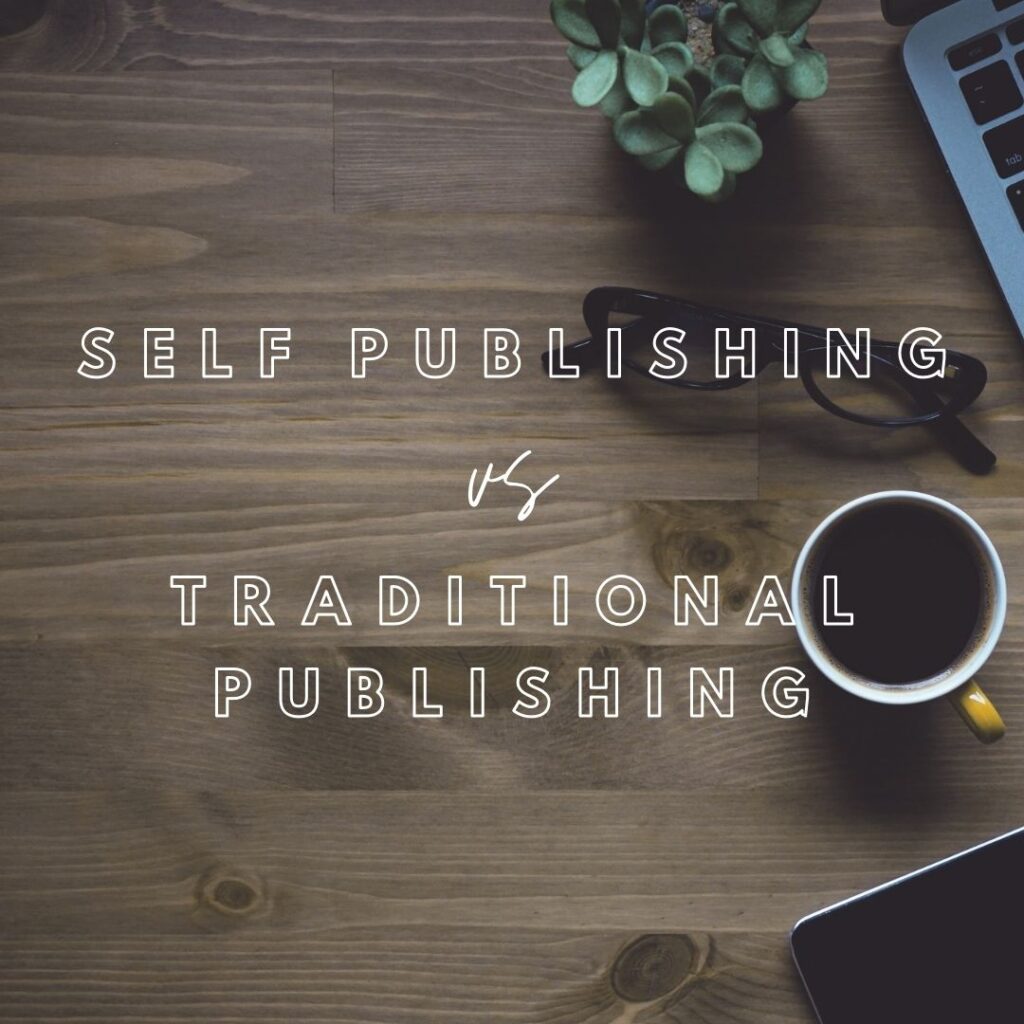
Years ago, when I first thought I might become a published author someday, I started researching how to achieve my goals. What I found was completely overwhelming. I needed an agent, but there were thousands of them. Each of them wanted different documents I had never heard of. Query? Synopsis? What?
In this series, I’m going to share what I found and break down how to publish your novel. I’ll cover a the difference between the types of publishing currently available, writing a query letter, writing a synopsis, and finding the ideal agent to query. The process can seem overwhelming, but I hope to offer some clarity and simplicity so you can approach publishing with confidence.
Self Publishing vs.
Traditional Publishing
There are currently two publishing methods:
- Self-publishing (a/k/a digital publishing / indie publishing / vanity publishing)
- Traditional publishing
What’s the difference?
Anyone can self-publish a novel. All you need is a completed manuscript (like it’s that easy!) and a modest amount of money to get started. Self publishing involves formatting your manuscript, designing a cover, and using a service (like Amazon’s Kindle Direct Publishing) to produce your book in electronic format, paper format, or both. That’s the easy part. Next, you have to market your book to convince prospective buyers it’s worth a read.
If you want your book to appear in major bookstores, like Barnes and Noble, traditional publishing is the route for you. This method requires you to have a literary agent. Agents are not publishers, and most publishers won’t accept novels from authors without agents. (This rule of thumb may not apply to non-fiction books, but we’re only going to focus on fiction in this series.) Therefore, you’ll need to find an agent by sending a “query.” The best agent is one who loves your book as much as you do. They will be your champion and will do their best to sell your book to a publishing house. Agents do not get paid until you do; they typically charge a commission of 15% for domestic sales.
Let’s look at some pros and cons for the self-publishing and traditional publishing methods.
Self-Publishing (Digital)
Pros
- Anyone can do it
- Less hassle of finding an agent
- More control
Cons
- Costs time and money
- No advance from publisher
- You pay all expenses (copyediting, design of cover, marketing, etc.)
- You do your own marketing
- No paper copies of your book are produced (unless you pay for this option)
Traditional Publishing
Pros
- Costs nothing but time
- Advance paid by publisher
- Publisher pays expenses (editing, design, marketing, printing, etc.)
- National distribution
- Publisher markets your book (with your help)
Cons
- It can be difficult to get an agent
- No guarantee of publication
- Slow process (18 months or more)
- Less control over process
- Agent takes a cut
With both of these routes, there are pitfalls. Beware agents charging a “reading fee” or having you pay for editorial services. No agent will ask for any money from you up front. If they do, run! The same goes for self publishing services. You may need/want to pay up front for certain services (book cover design, for one), but do your research on individual companies. There are predatory services out there that take advantage of unwary authors. Reedsy has a great post about how to spot scams. Always do your due diligence.
Personally, I prefer the traditional publishing route. I would rather have someone more knowledgeable do the design, editing, publishing, and (some) marketing of my book so I can focus on writing the next one.
Let’s say you’ve decided the traditional publishing route is right for you. What’s next?
Finding an agent is first on the list and we’ll cover that in next week’s post, “Finding a Literary Agent.”
Or, if you want to skip ahead, see the other posts in this series:
Organizing Submissions to Literary Agents
